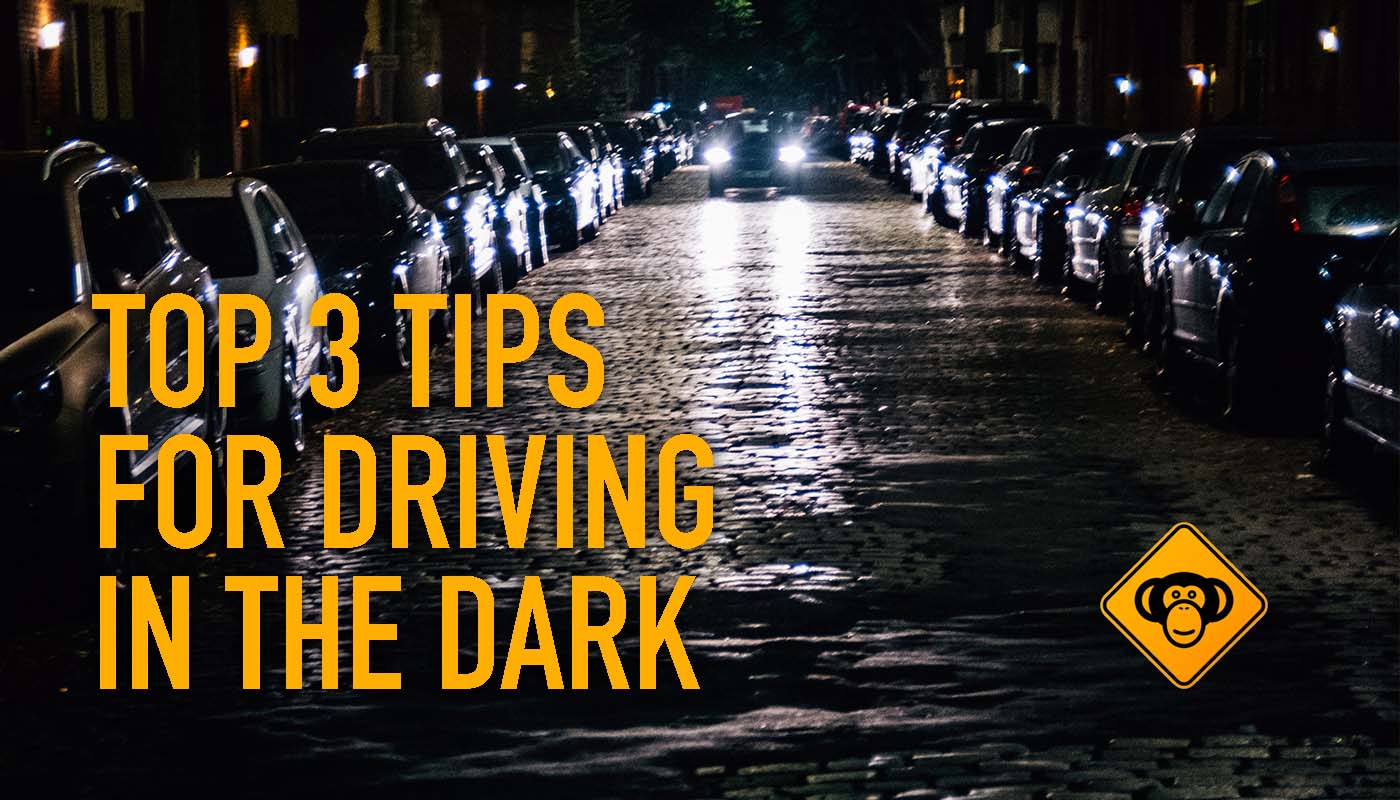Make sure you have these three things covered and you are on your way to a safer road journey in the dark.
Driving in the dark adds an increased level of risk and danger to any journey. This means you need to increase your levels of alertness and drive with a heightened sense of caution to make sure you complete your journey safely.

How To Drive Safely In The Dark
The most important thing to driving safely in the dark is - VISIBILITY. Daylight is no longer available so it's vital you can see the road ahead clearly, and you can be clearly seen by other road users.
LIGHTS
The number one rule for driving in the dark is - check your lights. Make sure all your lights are working correctly before you set off on your journey.
Check all of the following and make sure they are lighting correctly:
- Headlights - Full Beam
- Headlights - Dipped Beam
- Break Lights
- Indicators / Hazards
- Reversing Lights
- Fog Lights
- License Plate Lights
If any of your bulbs are faulty you should stay off the road at night time. Once you notice a fault take your car to the garage during daylight hours for a repair as soon as you possibly can.
Properly functioning lights are the most important feature on your car to ensure you can clearly see the road ahead. While cities and major roads have street lamps providing some illumination, these quickly disappear when you venture into the countryside or down smaller streets.
WINDOWS

Making sure your windscreen and all windows are clean, in good condition, and you can clearly see through them will make your night time trip a much safer one.
They need to be clean, free from any marks, and free from condensation and frost. Here are some tips to keep you safe and make sure your windows are in tip-top shape.
- Windscreen Wash - Make sure your windscreen wash jet is working properly and keep it topped up regularly
- Wiper Blades - Rub them down with a damp cloth to remove any grime and residue
- Dehumidifier - add a dehumidifier to the car interior to minimise condensation on window interiors
- Glass Cleaner - Use a glass cleaning product to clean all windows and mirrors
- Anti-Fog - Apply an anti-fog spray to the interior of your windows
- Rain Repellant - Apply rain repellent to the exterior of your windscreen and all windows
- De-Icer - If your windows freeze up use a de-icer and never hot water - it can damage the window
- Be Prepared - pack some de-icer, a scraper, and glass wipes in your boot for emergencies
WIPERS

Make sure your wiper blades are in good condition. Over time they become worn and begin to tear. Damaged wiper blades will not function properly and can lead to visibility problems in poor weather conditions.
Heavy rain or snow can seriously impair your visibility so it's important you make sure your windscreen wipers are up to the job. If you think they are past their best - just replace them. It's a really simple and inexpensive job. Wiper blades are one of the cheapest parts to replace on your car - even the good ones are priced very fairly.
You can take your car to the garage and get a professional to switch them out in minutes - or you can try it yourself. There are some excellent instructional videos on YouTube that will take you through the process step-by-step. Check out the video below...
FURTHER ADVICE - SAFE DRIVING AT NIGHT
- Reduce Your Speed - extra caution is required when driving at night as potential hazards become more difficult to see. Reduce your speed to allow you more time to react.
- Increase Spacing - increase the distance between you and the driver in front. This will allow you more time to react to any unexpected event and could help avoid an accident.
- Emergency Breakdown Kit - pack an emergency kit in the boot. The items you need are inexpensive and could really get you out of a tight spot in an emergency - high viz jacket, triangle, blanket, rain jacket, torch with batteries and first aid kit.
- Pedestrians - you'll need to pay extra attention to your surroundings and look out for pedestrians. They'll be more difficult to see in low light and dark driving conditions.
- Rest - never drive when you feel tired or drowsy. It's not just falling asleep that causes accidents, it's the slower reaction times of drivers who are feeling sleepy and not fully alert. If you are on the road and begin to feel drowsy - pull over and take a nap.
- Dash Cam - you can't always avoid an accident. You may be caught up in one through no fault of your own. Use a dashcam to record your journey and the video evidence may be of value to you further down the road.


